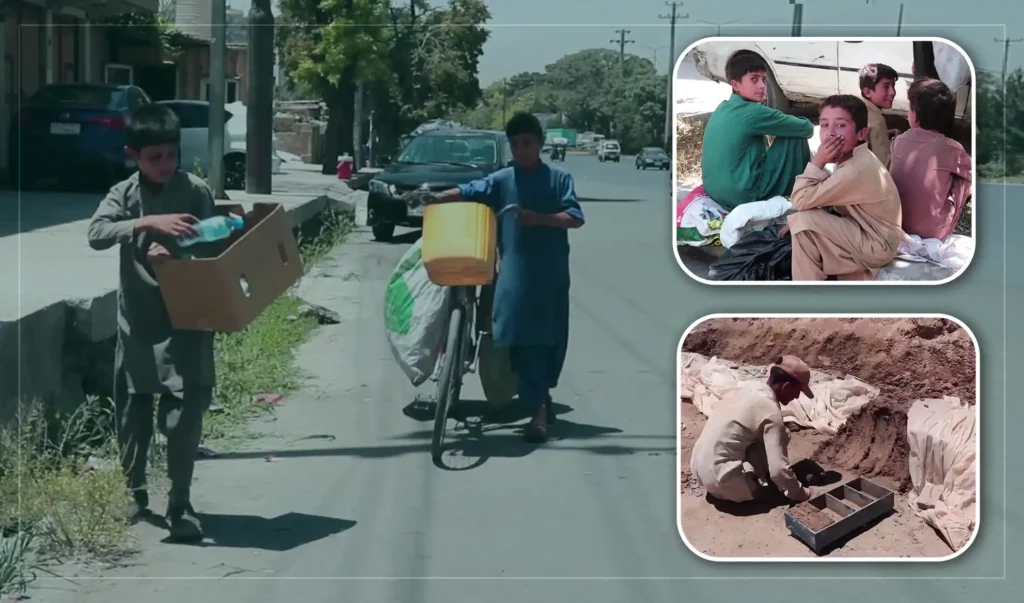Children involved in hard labour want jobs for their parents
Children involved in hard labour want jobs for their parents Pajhwok Afghan News


Children in Afghanistan Demand an End to Child Labor

Reported by: [Author’s Name]
Date: [Date]
Introduction
A group of children involved in hard labor in Afghanistan have made a plea to the ‘Islamic Emirate of Afghanistan’ (IEA) government. They have requested the government to provide employment opportunities for their parents so that they no longer have to work. These economically disadvantaged children have also demanded access to education and training opportunities.
Sustainable Development Goals (SDGs)
- Goal 1: No Poverty
- Goal 4: Quality Education
- Goal 8: Decent Work and Economic Growth
Reasons for Child Labor
The main reasons behind children engaging in hard labor are poverty and orphanhood. These circumstances force children to work instead of pursuing an education.
International Law and Child Labor
According to international law, any form of hard labor that harms the mental, physical, and educational well-being of children is strictly prohibited. Although Afghanistan’s Labor Law forbids child labor for those under the age of 18, many Afghan children are still involved in hard labor due to poverty and economic crises.
The Role of Government and International Organizations
Experts believe that it is the responsibility of the government and international organizations to take practical steps to prevent child labor. They should work towards creating an environment where children are protected from engaging in hard labor.
Testimonies from Children
- Ebadullah, 13, works in a brick factory in Dehsabz district. He supports a 10-member family and wishes to go to school instead of working. He earns 300 afs per day.
- Afsar Ali also works in the same brick factory and urges the IEA government to provide education facilities and support to children like him.
- Syed Ali Farzad, 11, sells drinking water in Kabul. He is the sole breadwinner for his family and is unable to focus on his studies due to work.
- Eshaq, 10, collects bottles under the scorching sun to support his sick father. His daily earnings of 150 afs are insufficient for their expenses.
Consequences of Child Labor
Child labor has legal, social, moral, economic, and cultural consequences for the children involved. They are vulnerable to exploitation and abuse, including sexual exploitation.
Recommendations
Abdullah Karkar Nisar, an expert in children’s affairs, emphasizes the need for comprehensive strategies to reduce child labor. This includes providing education facilities and creating awareness among parents about the importance of education and discouraging child labor. The Ministry of Works and Labor Affairs is committed to fighting child labor and has started registering children who were previously working on the streets.
Statistics on Child Labor
Although a nationwide survey on child labor has not been conducted yet, the International Labour Organization reported that around 1.6 million children were involved in labor in Afghanistan in 2021. With the recent political changes in the country, this number is expected to increase.
Conclusion
It is crucial for international organizations and government institutions to strengthen their commitment to combat child labor in Afghanistan. By doing so, they can create better conditions for the future of Afghan children.
Source: [Source Name]
SDGs, Targets, and Indicators Identified in the Article
| SDGs | Targets | Indicators |
|---|---|---|
| SDG 1: No Poverty | 1.3: Implement nationally appropriate social protection systems and measures for all, including floors, and by 2030 achieve substantial coverage of the poor and the vulnerable. | – |
| SDG 4: Quality Education | 4.1: By 2030, ensure that all girls and boys complete free, equitable, and quality primary and secondary education leading to relevant and effective learning outcomes. | – |
| SDG 8: Decent Work and Economic Growth | 8.7: Take immediate and effective measures to eradicate forced labor, end modern slavery and human trafficking, and secure the prohibition and elimination of the worst forms of child labor, including recruitment and use of child soldiers, and by 2025 end child labor in all its forms. | – |
1. Which SDGs are addressed or connected to the issues highlighted in the article?
SDG 1: No Poverty
The issue of children involved in hard labor due to poverty is directly connected to SDG 1, which aims to eradicate poverty in all its forms and dimensions.
SDG 4: Quality Education
The demand for education and training opportunities by the children involved in hard labor highlights the connection to SDG 4, which focuses on ensuring inclusive and equitable quality education for all.
SDG 8: Decent Work and Economic Growth
The issue of child labor and the demand for work opportunities for parents are connected to SDG 8, which aims to promote sustained, inclusive, and sustainable economic growth, full and productive employment, and decent work for all.
2. What specific targets under those SDGs can be identified based on the article’s content?
Target 1.3: Implement nationally appropriate social protection systems and measures for all, including floors, and by 2030 achieve substantial coverage of the poor and the vulnerable.
This target is relevant as it addresses the need for social protection systems to support families in poverty and protect children from engaging in hard labor.
Target 4.1: By 2030, ensure that all girls and boys complete free, equitable, and quality primary and secondary education leading to relevant and effective learning outcomes.
This target is relevant as it highlights the importance of providing education opportunities to children involved in hard labor, enabling them to access quality education and break the cycle of poverty.
Target 8.7: Take immediate and effective measures to eradicate forced labor, end modern slavery and human trafficking, and secure the prohibition and elimination of the worst forms of child labor, including recruitment and use of child soldiers, and by 2025 end child labor in all its forms.
This target is relevant as it addresses the need to eliminate child labor in all its forms, including the worst forms that harm children’s physical and mental well-being.
3. Are there any indicators mentioned or implied in the article that can be used to measure progress towards the identified targets?
No specific indicators are mentioned or implied in the article that can be used to measure progress towards the identified targets.
SDGs, Targets, and Indicators
| SDGs | Targets | Indicators |
|---|---|---|
| SDG 1: No Poverty | 1.3: Implement nationally appropriate social protection systems and measures for all, including floors, and by 2030 achieve substantial coverage of the poor and the vulnerable. | – |
| SDG 4: Quality Education | 4.1: By 2030, ensure that all girls and boys complete free, equitable, and quality primary and secondary education leading to relevant and effective learning outcomes. | – |
| SDG 8: Decent Work and Economic Growth | 8.7: Take immediate and effective measures to eradicate forced labor, end modern slavery and human trafficking, and secure the prohibition and elimination of the worst forms of child labor, including recruitment and use of child soldiers, and by 2025 end child labor in all its forms. | – |
Behold! This splendid article springs forth from the wellspring of knowledge, shaped by a wondrous proprietary AI technology that delved into a vast ocean of data, illuminating the path towards the Sustainable Development Goals. Remember that all rights are reserved by SDG Investors LLC, empowering us to champion progress together.
Source: pajhwok.com

Join us, as fellow seekers of change, on a transformative journey at https://sdgtalks.ai/welcome, where you can become a member and actively contribute to shaping a brighter future.







